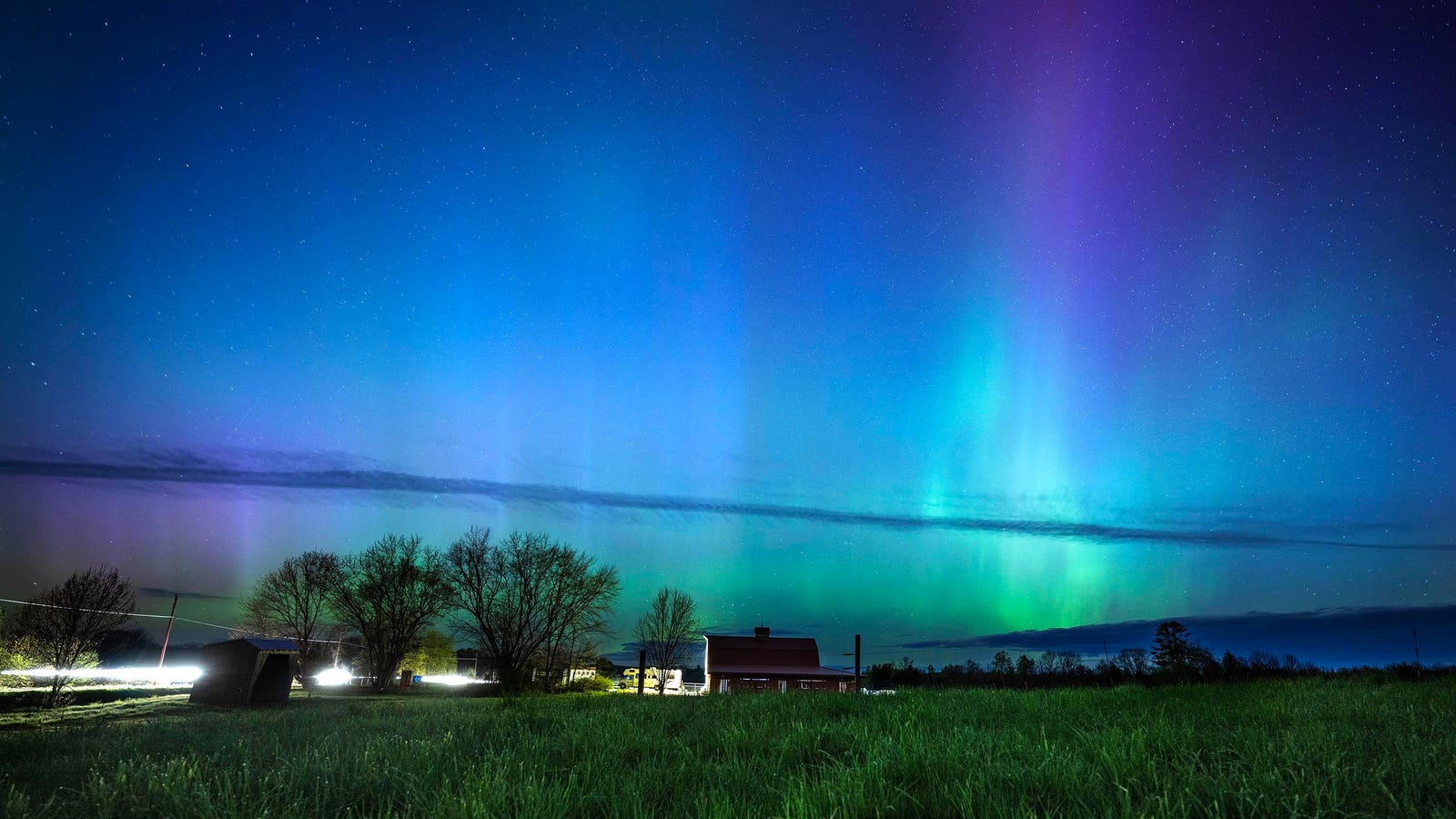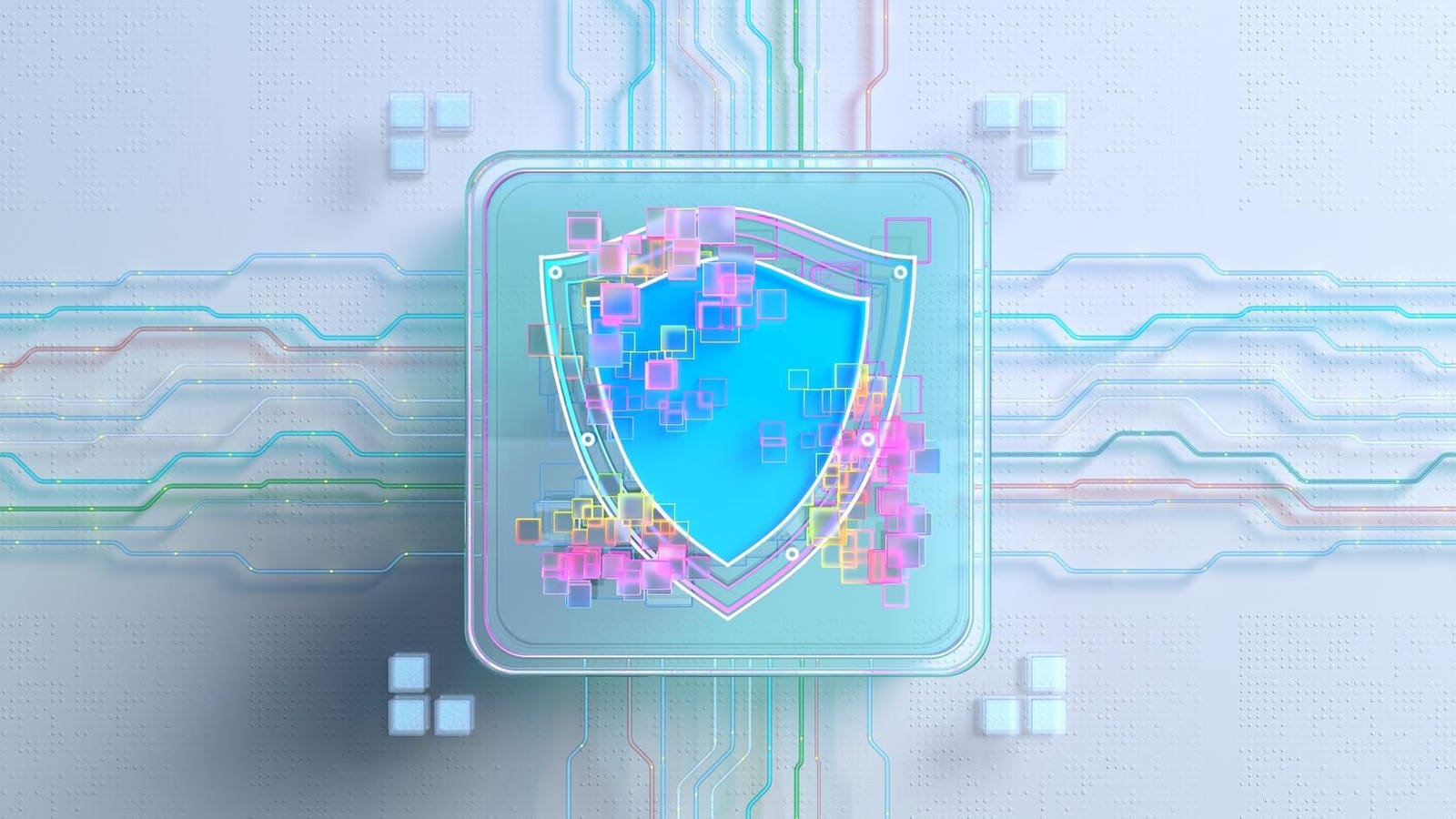Topline
The Northern Lights may be visible on camera close to the U.S.-Canada border as soon as it gets dark on Thursday, June 19 and into Friday, June 20, according to the National Oceanic and Atmospheric Administration’s Space Weather Prediction Center, with forecasts including a geomagnetic storm that could potentially be visible from 14 U.S. states.
The northern lights streak through the sky over horse barn in Mercer, Maine on May 10, 2024. (Photo … More
Key Facts
NOAA is forecasting a geomagnetic storm, measured at a value of G1 on a scale of G1 to G5, beginning around 1:00 a.m. EDT on Friday, June 20, though the timing is hard to accurately predict.
NOAA’s aurora viewlines have potential aurora displays possible in northern U.S. states and Canada — though in the U.S., those regions close to the Canada border will have the highest chance
According to NOAA’s forecast, the Kp index — which provides a rough guide to the intensity of aurora displays — may reach 5, seeing the auroral oval stretch farther south. For a Kp in the range of 3 to 5, the aurora can be “quite pleasing to look at.” The Kp index uses a scale of 0 to 9.
The geomagnetic storm on May 10, 2024, which saw aurora as far south as Florida, was rated as G5 and had Kp 9 intensity. It was the most powerful since 2003.
The Northern Lights are caused by the solar wind, a stream of charged particles from the sun interacting with Earth’s magnetic field. Although the magnetic field deflects most of it, some charged particles accelerate along the magnetic field lines toward the polar regions, where they collide with oxygen and nitrogen atoms, exciting them and causing them to release energy as light.
The aurora viewline as forecast by NOAA for overnight on June 19/20, 2025.
Spike In Solar Activity Dampened By The Solstice
The chance of aurora comes as a result of an Earth-directed coronal mass ejection — a cloud of charged particles — leaving the sun on June 17 in the wake of an X-class solar flare, according to NOAA. The slight increase in solar activity comes as the Northern Hemisphere prepares to celebrate the summer solstice. Occurring at 9:40 p.m. EDT on Friday, June 20, the solstice sees the sun reach higher into the sky than on any other day of the year, shining directly above the Tropic of Cancer to create the longest day and shortest night. That will make any aurora-viewing window particularly narrow, with the hours just after midnight the best time to look north for a hint of aurora.
Where To See The Northern Lights
Parts of U.S. states that could potentially see aurora — possibly only on camera — according to NOAA, include Washington, northern Idaho, Montana, Wyoming, North Dakota, South Dakota, Minnesota, northern Iowa, Wisconsin, Michigan, New York, Vermont, New Hampshire and Maine. While Alaska is firmly within the aurora oval — and so would normally be expected to see aurora — it currently does not get dark at Alaska’s latitude. Check NOAA’s 30-minute forecast or use the Glendale App for up-to-the-minute forecasts.
‘fake’ Solar Eclipses Could Help Space Weather Predictions
Earlier this week, the European Space Agency published the first images from its groundbreaking Proba-3 mission to image the sun’s corona. This hotter layer of the sun’s outer atmosphere — typically only observable during totality in a total solar eclipse — is where space weather events come from, including solar flares and coronal mass ejections. It’s exactly those events that cause geomagnetic storms and aurora. Proba-3 is a two-year mission during which a total solar eclipse will be created for six hours in every 19.6-hour orbit. “Our ‘artificial eclipse’ images are comparable with those taken during a natural eclipse,” said Andrei Zhukov, Principal Investigator for ASPIICS at the Royal Observatory of Belgium.
Further Reading








